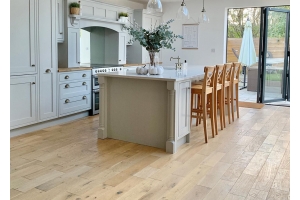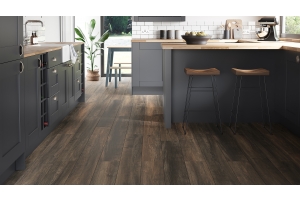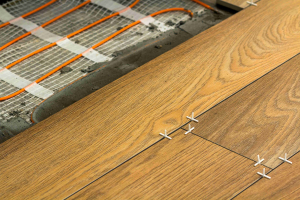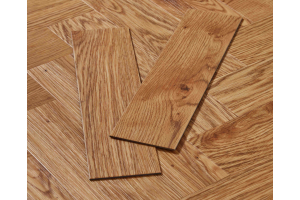News, Reviews, Guides & Inspirational Ideas
Part five is the last in the series of our ‘before you lay your wood floor’ posts. Now that you have your room ready and your flooring prepared to lay, now all you need to do is decide on your fitting method.
Overall, there are a few wood floor laying options. These include secret nailing, gluing or even having a floating floor. However, the sub-floor you are laying your wood on and the type of wood you have chosen (engineered or solid wood) have a huge impact on what options are suitable for you. See our flowchart below to see what fitting method is suitable for you.
Welcome to part four of our “before you lay your wood floor” series. At this stage your room should be completely ready and prepared for your flooring to be delivered. Read our previous stages by clicking on the relevant number 1, 2, 3. Whether you have opted for a brushed and oiled finish or super matt lacquered, you should ensure you acclimatise your wood floor. This allows it to adapt to the environment of the room.
Luxury Vinyl Tiles (LVT) is renowned as the go-to-flooring for commercial designers and industrial fit-outs. As a robust yet versatile alternative to tiled and hardwood, LVT's ability to replicate their designs to an intricate detail is much admired. Displaying the character, look and grain of wood flooring or the texture and feel of Italian slate tiles, LVT offers an affordable alternative. As the fastest growing market segment in the flooring industry, homeowners are vastly clicking on to it.
So we’ve covered the basics of LVT but why is it suddenly taking over our homes?
Choosing the right flooring for your home can be a tough decision. Picturing whether your stylish new sideboard will tie in with a complimentary natural oak wood floor or contrast perfectly with a rustic dark grain, can be hard to envision. Fear not, we’re here to help. We’re not about to pop round with a flooring fitter but we can give you some expert advice and free wood flooring samples to help you along the way.
In our previous ‘Before you lay your wood floor’ posts we discussed the suitability of the room and how to prepare your sub-floor so it is ready for the wood flooring to be laid. The next thing to look at is the room's environment.
Welcome to Part 2 of our ‘Before You Lay Your Wood Floor’ series. In our last post we talked about the room suitability for a wood floor. Here in part 2: 'Preparing your Subfloor' we will be discussing how to get your subfloor ready for wood flooring.
A wooden floor brings subtle elegance and instant style to a home. It isn't a cheap purchase, and there are a few things you need to do and think about before you buy or lay your wood flooring, but don't worry it's pretty straight forward and our collection of 'before you lay your wood floor' posts will provide you with the key bits of information you need and help guide you on your purchase. First on the cards is looking at 'room suitability' and where you can safely lay a wood floor.
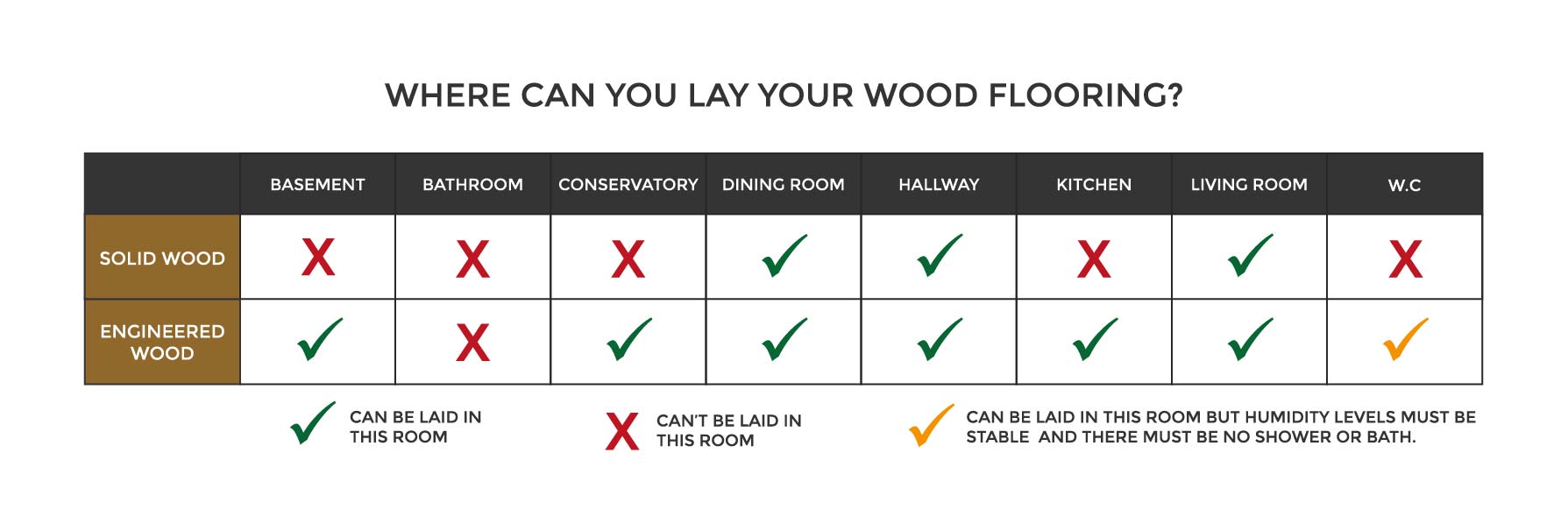
Solid Wood Flooring offers a unique combination of class, durability and character to its surroundings - making it one of the best flooring choices for a homeowner looking for a new floor. However, these dashing good looks and amazing characteristics of hardwood floors need protecting from daily wear and tear and other environmental circumstances and require a little attention. The general rule of thumb for any solid wood flooring is: pay your flooring care and attention and your floor will reward you with years of stunning style and service.
Can you lay laminate flooring anywhere in the home? The answer is yes, a small selection of laminates can - however, approach with caution. So where can I lay laminate flooring and where should I avoid?
A wood floor can change the aesthetics of your room with its beautiful and unique grain patterns and characterful look. Although the finish of a wood floor can affect the feel of the room, the width of the planks is also important to consider as this can change the look of a room dramatically. Wooden planks are sold in various widths from narrow 80mm wide strips to ultra wide 220mm boards - your choice can make a room look bigger, busier, cosier or even more relaxed so it's important to know which width to go for to create the look you desire. Here we will discuss the look narrow or wide planks will achieve!









